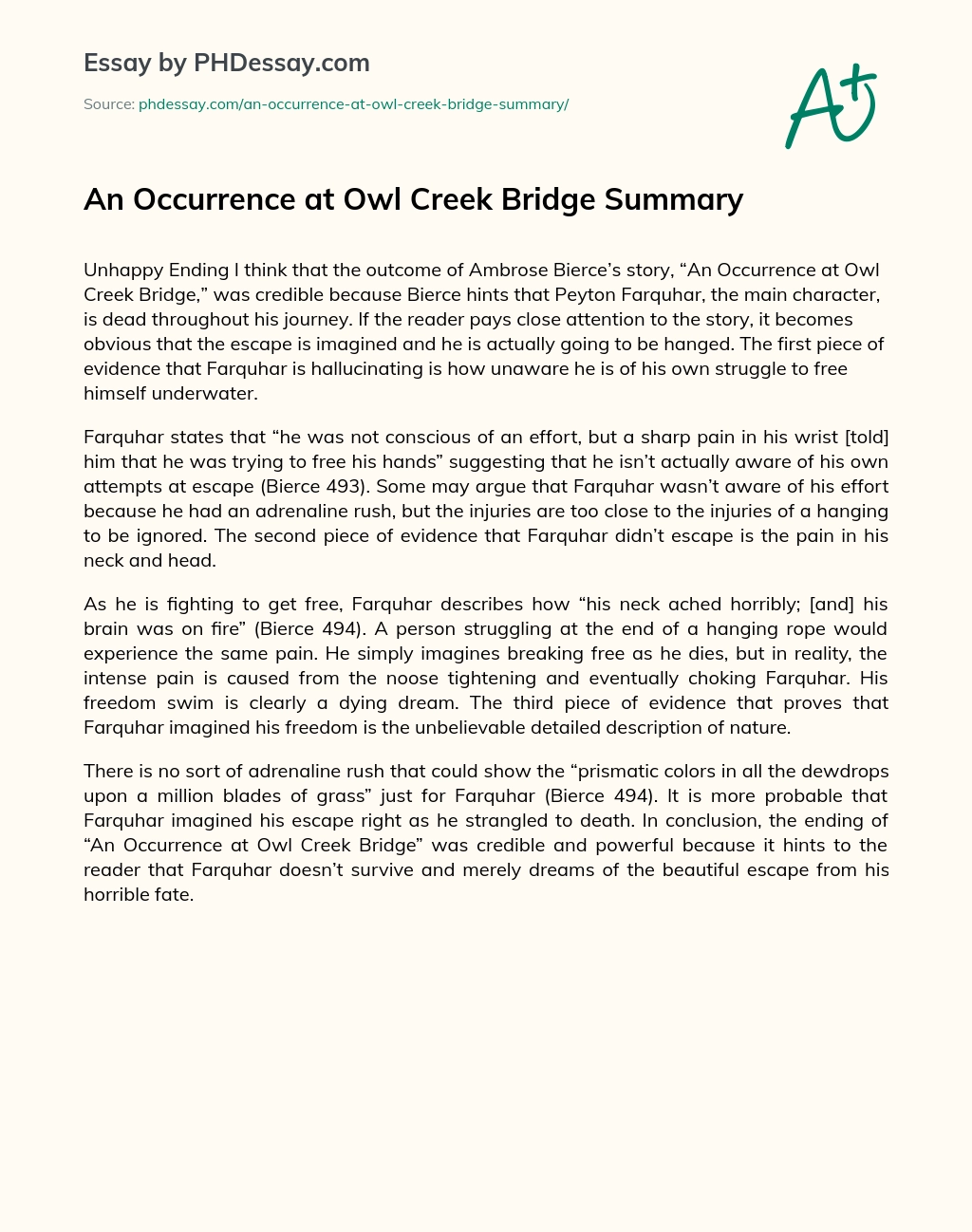Ambrose Bierce’s “An Occurrence at Owl Creek Bridge” delivers a masterclass in psychological realism cloaked in the guise of a Civil War narrative. Initially, the story presents a seemingly straightforward execution of a Confederate sympathizer, Peyton Farquhar. However, the narrative quickly veers into the subjective, offering a profound exploration of perception, time, and the desperate longing for escape in the face of death.
The tale commences with a stark depiction of Farquhar standing on a railroad bridge in Alabama, hands bound, awaiting his execution by Union soldiers. The meticulous description of the setting – the rushing water below, the stoic soldiers, and the ticking of his watch – creates a palpable sense of tension. It foreshadows the central theme of distorted time perception.
Suddenly, the rope breaks (or so it seems). Farquhar plummets into the creek, miraculously freed from his bonds. What transpires next is a phantasmagorical sequence. He escapes the volley of bullets aimed at him, navigating the treacherous currents with superhuman strength and awareness. He experiences heightened sensory acuity, noticing minute details of the natural world with astonishing clarity. The gray eye of a marksman; the delicate veins in the leaves.
This escape is not merely physical; it is a journey into Farquhar’s deepest desires. He envisions returning home to his wife and children, embarking on a perilous trek through the wilderness. The reader, complicit in this delusion, is swept along by the vividness of his experience.
The journey home intensifies, becoming increasingly surreal. The landscape transforms into a dreamscape, filled with unfamiliar sights and sounds. The stars align in unnatural formations. He runs, driven by an overwhelming urge to reunite with his family, a desperate need for solace and normality in the face of impending doom.
The final act shatters the illusion. Farquhar reaches his home, embraces his wife, but as he reaches out to her, he feels a stunning blow to the back of his neck. The scene cuts back to the Owl Creek Bridge. The “escape” was nothing more than a fleeting fantasy, a desperate attempt by Farquhar’s mind to escape the reality of his imminent death. He is, in that instant, still hanging from the bridge.
The true brilliance of “An Occurrence at Owl Creek Bridge” lies in its manipulation of perspective. The story initially presents an objective viewpoint, but quickly shifts to Farquhar’s subjective experience. The reader becomes intimately involved in his hopes and fears, only to be brutally awakened to the harsh reality. This dramatic shift in perspective is the cornerstone of the story’s impact.
The story employs a fragmented structure, moving seamlessly between past, present, and imagined future. The first section establishes the setting and introduces Farquhar. The second delves into his backstory, revealing his ardent support for the Confederacy and his desire for military glory. He was, after all, tricked by a scout into attempting to sabotage the bridge. The third and longest section details his imagined escape, which is revealed to be a product of his dying mind.
The use of vivid imagery and sensory detail is paramount to the story’s effectiveness. Bierce’s descriptions of the natural world are particularly striking, creating a sense of both beauty and menace. The rushing water, the dense forest, and the ominous ticking of the watch contribute to the overall atmosphere of suspense and dread.
The ending of “An Occurrence at Owl Creek Bridge” is undeniably shocking and unsettling. The abrupt return to reality leaves the reader reeling, questioning the nature of perception and the power of the human mind to create its own reality, even in the face of death. It forces a reevaluation of the entire narrative, prompting a deeper understanding of Farquhar’s psychological state.
The story’s exploration of time is equally significant. The subjective experience of time is distorted in Farquhar’s mind, stretching and compressing as he desperately clings to life. What seems like hours of escape transpires in mere moments, highlighting the relativity of time perception under extreme duress.
“An Occurrence at Owl Creek Bridge” transcends a simple war story. It stands as a profound meditation on the human condition. Bierce’s masterful use of perspective, fragmented structure, and vivid imagery create a haunting and unforgettable experience that continues to resonate with readers today.
Ultimately, the story serves as a stark reminder of the fragility of life and the power of the human mind to seek refuge, however fleeting, in the face of existential dread. The illusion of hope is a potent force, even when it is ultimately destined to be shattered. It underscores the importance of understanding and empathizing with the subjective experiences of others, even those who hold opposing beliefs. The story’s lasting impact stems from its exploration of these universal themes, rendered with chilling precision and profound psychological insight.
